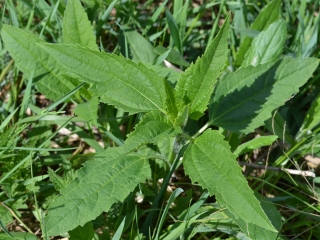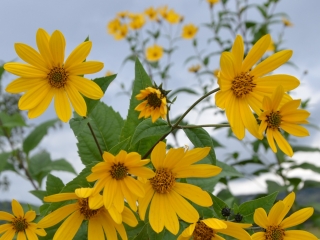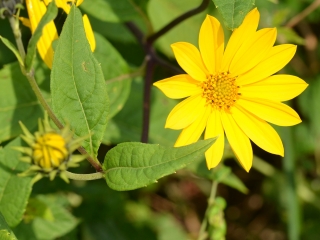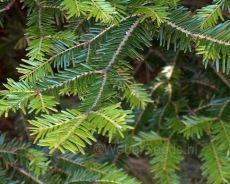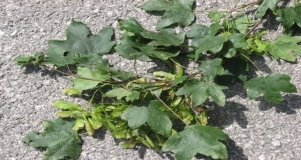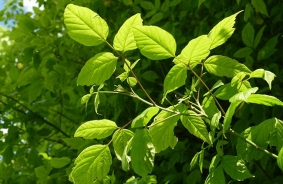Jerusalem artichoke Helianthus tuberosus
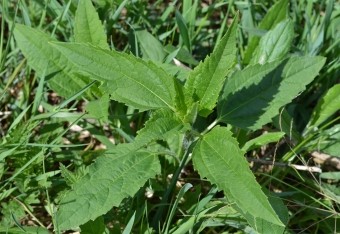
Features
It is a perennial plant that has elongated warty tubers underground. It comes from North America and spread in Europe in the 19th century.
| Species | Perrenial |
| Living space | Lake, Pond, Rivers, Swamp |
| Size | more than 3 m |
Specialty habitat
Description
It is a herbaceous perennial plant growing to 1.5–3 m tall with opposite leaves on the upper part of the stem but alternate below. The leaves have a rough, hairy texture. Larger leaves on the lower stem are broad ovoid-acute and can be up to 30 cm (12 in) long. Leaves higher on the stem are smaller and narrower. The flowers are yellow and produced in capitate flowerheads, which are 5–10 cm in diameter, with 10–20 ray florets and 60 or more small disc florets. The tubers are often elongated and uneven, typically 7.5–10 cm long and 3–5 cm thick, and vaguely resembling a ginger root in appearance, with a crisp and crunchy texture when raw. They vary in colour from pale brown to white, red, or purple. Due to its similar consistency, many Jerusalem artichokes use the same as potatoes, but its taste is sweeter and somewhat reminiscent of nuts. It can also be used raw. As a food, it is very suitable for diabetics, as it helps regulate blood sugar. It contains basic elements that neutralize the body's acidity, it is useful for good digestion and the body's supply of minerals. It is also suitable for weight loss diets, as it suppresses appetite. It grows wild along rivers and in moist soils.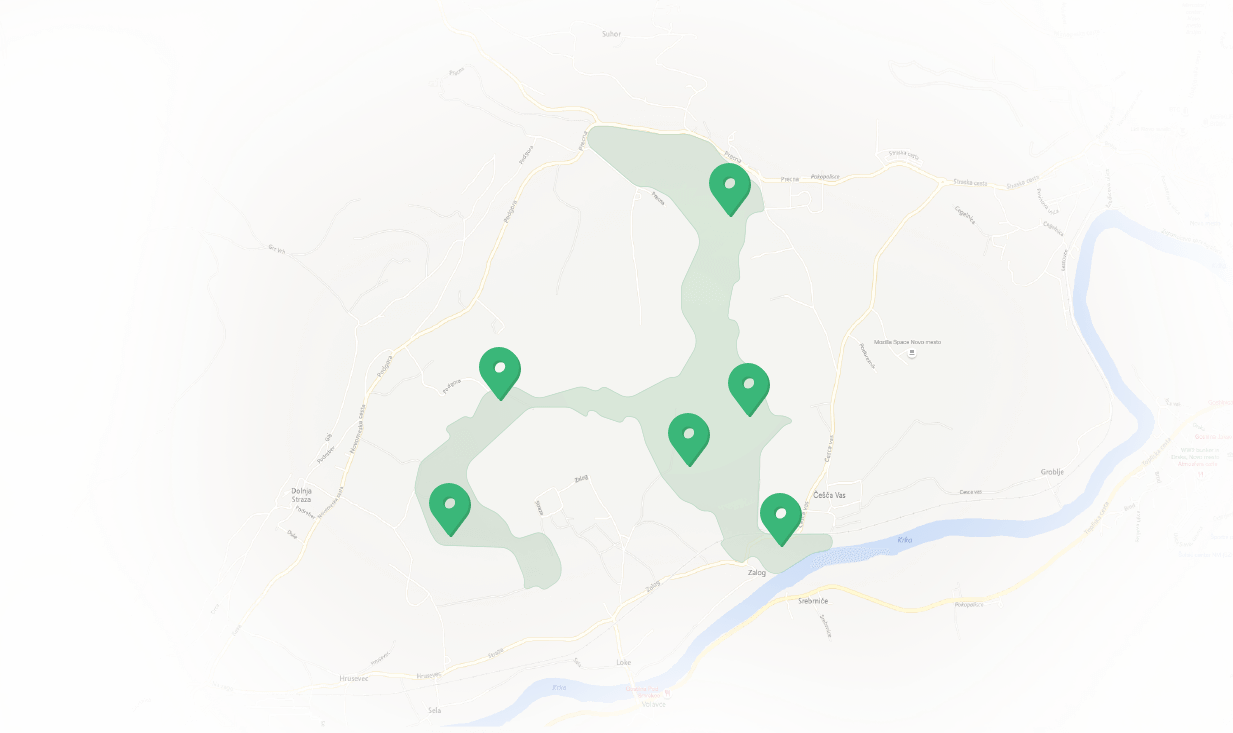
Features Temenica (3)
SPECIAL ogr.

